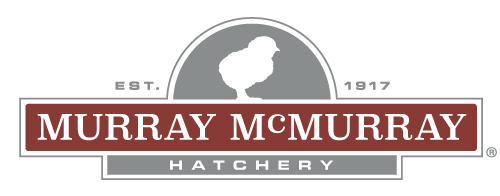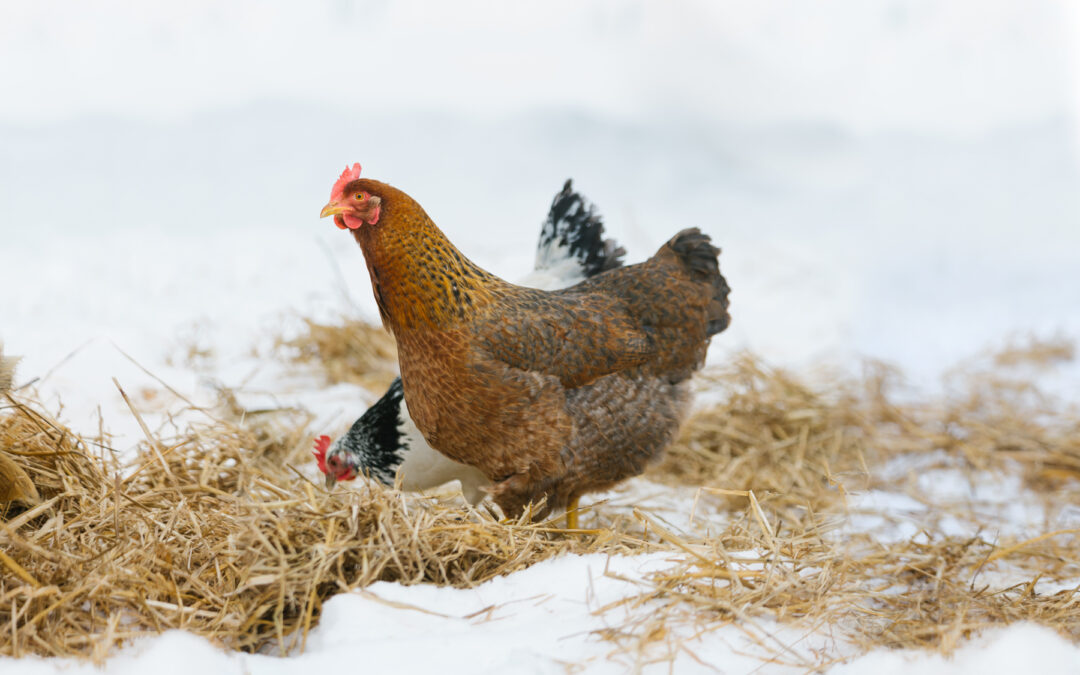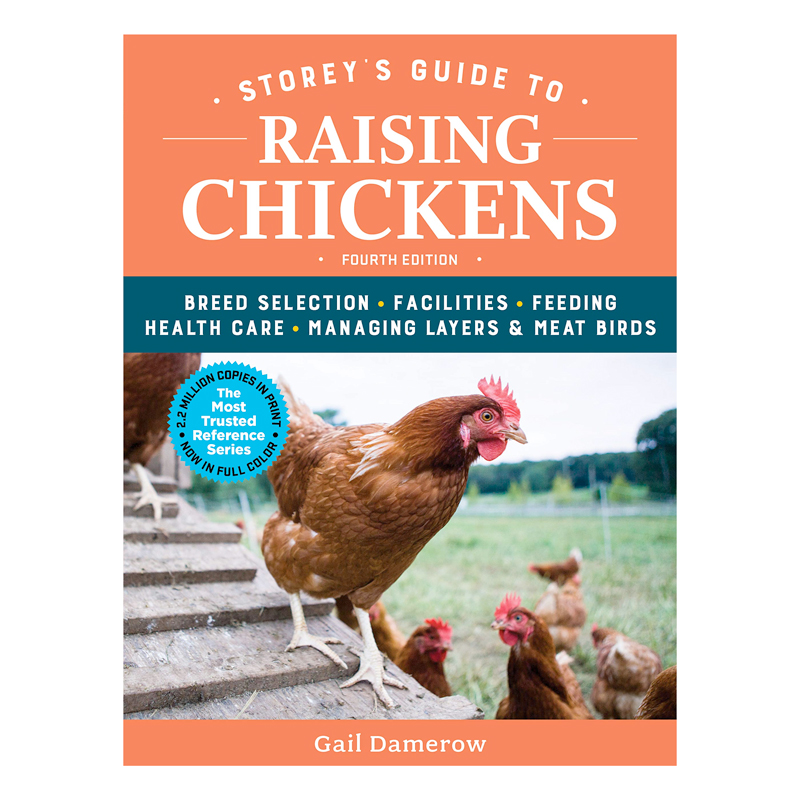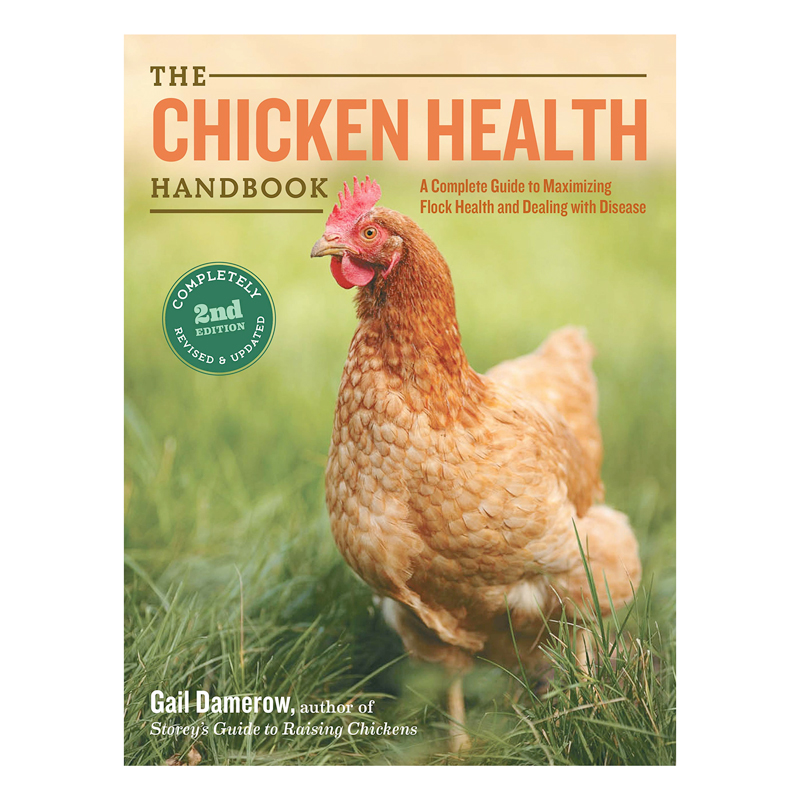The terms “autosex chickens” and “sex link chickens” are often used mistakenly used interchangeably. Continuing our interview series with Gail Damerow, poultry expert and best-selling author, we ask her to explain the difference between autosex chickens and sex link chickens.
What is the difference between autosex chickens and sex link chickens?
The two are similar in some ways, but they are also very different. The obvious similarity is that in both, the male and female offspring have different down color or markings at the time of hatch. This means that they can be sexed at hatch with varying degrees of success.
However, a major difference between the two is that autosex chickens are a true breed. Therefore, mating a male and female will breed true, meaning that the pairing will result in offspring that are just like their parents. Their plumage may or may not significantly differ into maturity. Autosexing chickens can be reliable layers, but they are not bred for high production as with sex link chickens. However, because they breed true, autosex chickens offer the possibility of hatching your own future replacement flock.
Sex links, on the other hand, are hybrids, and therefore do not breed true. If you mate a male and female sex link, you won’t necessarily be able to sex the resulting chicks at hatch. And the offspring may differ from their parents in multiple other ways, such as in plumage color, size, and laying ability. Sex link chickens are bred for high-level egg production.
What are some examples of autosex chickens?
Cream Legbars, for one. They were bred in England by crossing brown Leghorns, Barred Plymouth Rocks, and Araucanas among other breeds. Then they were developed into a specific breed of their own. At hatch, the pullets have a broad, dark chipmunk stripe that extends from the head down the back, and a small, pale head spot. Cockerels have a distinctive light-colored dorsal strip. At maturity, the hens are silver gray with a salmon breast. The roosters are creamy white with dark barring on the breast and tail.
Another example is the Bielefelder. They were developed in Germany from a number of different breeds including Barred Plymouth Rock, Rhode Island Red, New Hampshire, and a Dutch breed called Cuckoo Malines. Bielefelder pullets are dark brown, with chipmunk stripes on their back and a black mark across the eyes. Cockerels are light brown with a white patch on the head. At maturity, the hens are brown with a subtle white and gray Cuckoo pattern. Roosters are Cuckoo throughout, with orange hackles, backs, and saddles and black tails and breasts. (The Cuckoo pattern is similar to barring, only less distinctly striped.)
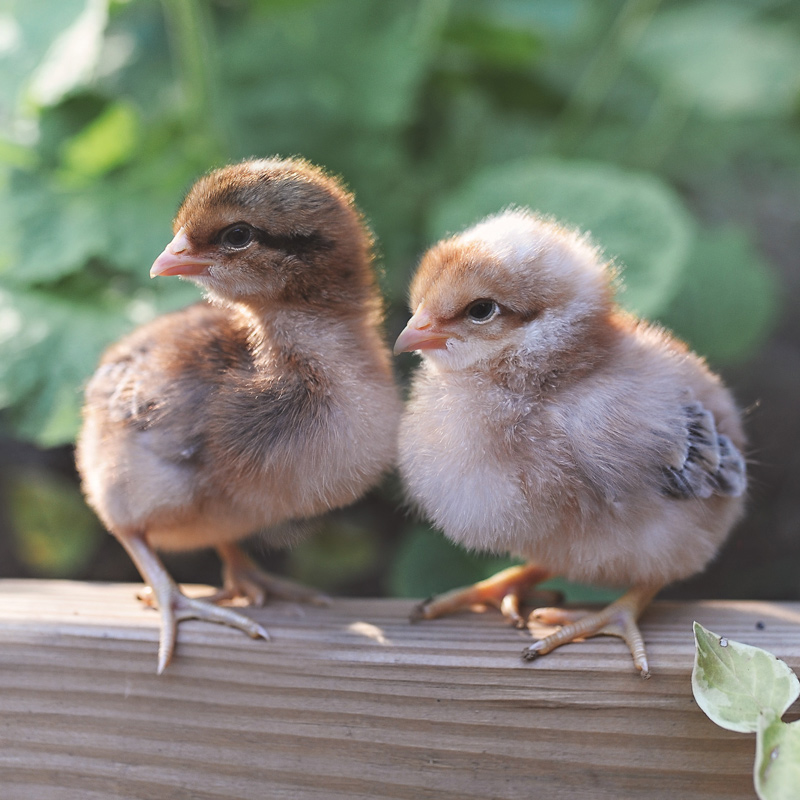
Autosexing chicken breeds such as the Bielefelder can be easily distinguished from each other at hatch. Shown above are a female (left) and a male (right) Bielefelder.
What are some examples of autosex chickens?
Cream Legbars, for one. They were bred in England by crossing brown Leghorns, Barred Plymouth Rocks, and Araucanas among other breeds. Then they were developed into a specific breed of their own. At hatch, the pullets have a broad, dark chipmunk stripe that extends from the head down the back, and a small, pale head spot. Cockerels have a distinctive light-colored dorsal strip. At maturity, the hens are silver gray with a salmon breast. The roosters are creamy white with dark barring on the breast and tail.
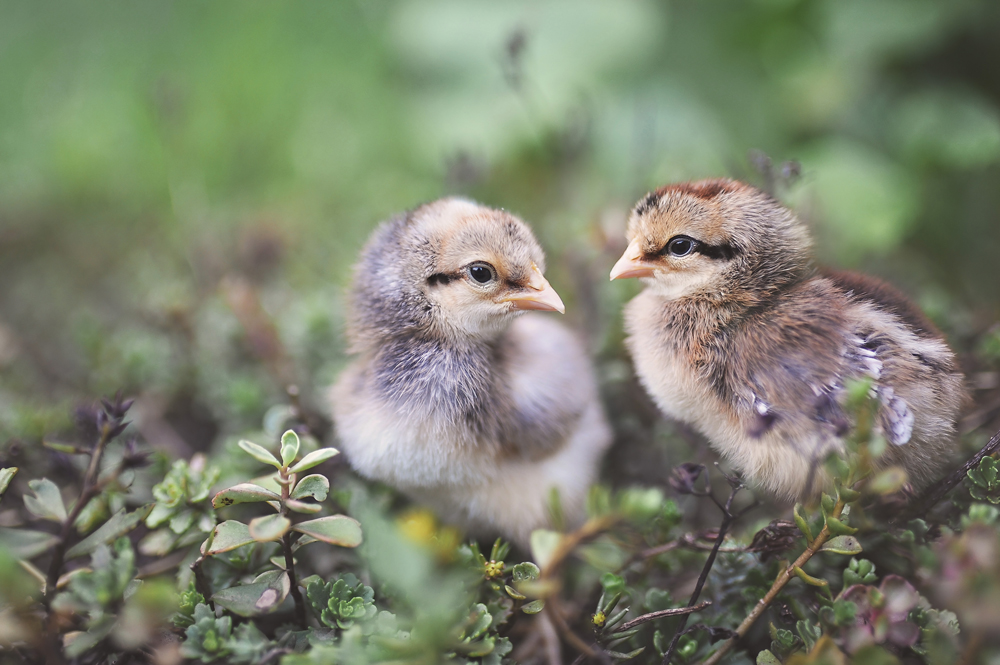
Another autosexing chicken breed is the Crested Cream Legbar. Shown above are a male (left) and a female (right) baby chick.
Another example is the Bielefelder. They were developed in Germany from a number of different breeds including Barred Plymouth Rock, Rhode Island Red, New Hampshire, and a Dutch breed called Cuckoo Malines. Bielefelder pullets are dark brown, with chipmunk stripes on their back and a black mark across the eyes. Cockerels are light brown with a white patch on the head. At maturity, the hens are brown with a subtle white and gray Cuckoo pattern. Roosters are Cuckoo throughout, with orange hackles, backs, and saddles and black tails and breasts. (The Cuckoo pattern is similar to barring, only less distinctly striped.)
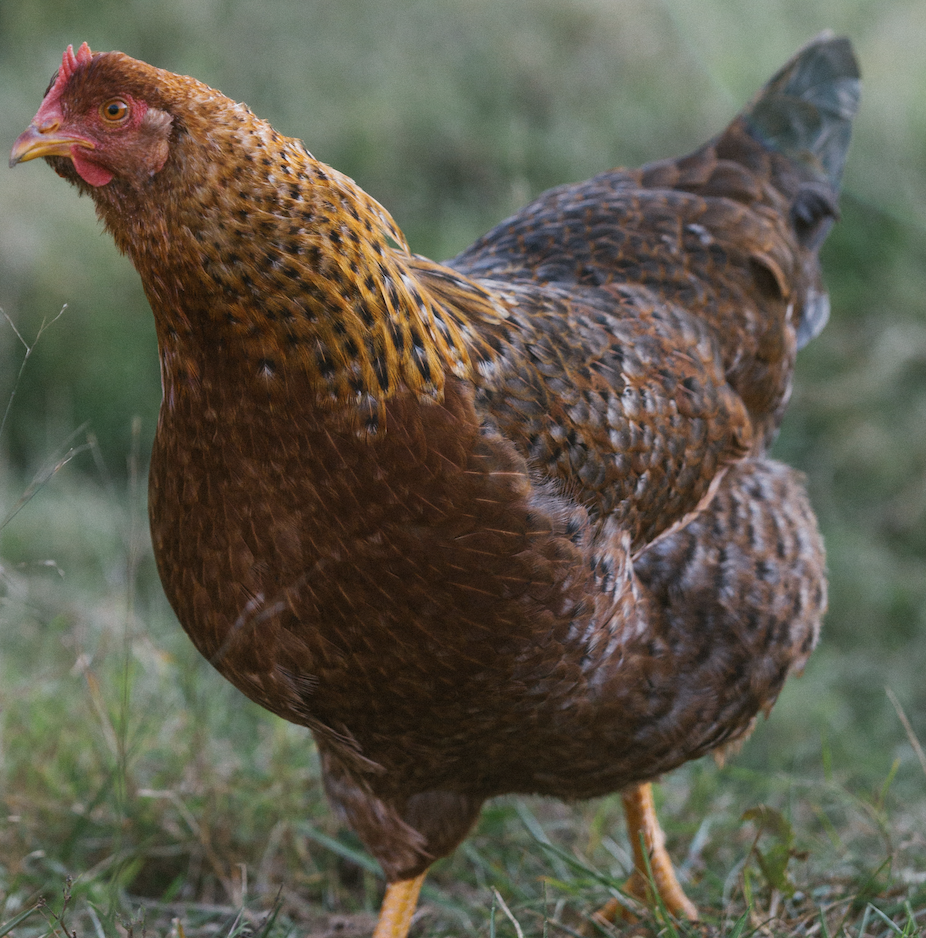
This Bielefelder hen is an example of an autosexing chicken breed.
What about Sex Link breeds — and what does “sex link” mean?
The term “sex link” means the breeding method takes advantage of dominant and recessive — whether present or absent —genes carried on the parents’ sex chromosomes. Since the traits influenced by these genes are genetically linked to the sex chromosomes, the resulting chickens are called sex links.
But what’s interesting is that hatcheries may devise their own names for the sex link chicken breeds they offer. So sex links with different names might actually be the same from one hatchery to the next. McMurray Hatchery, for example, offers Red Star sex links, which are the similar to the ISA Brown.
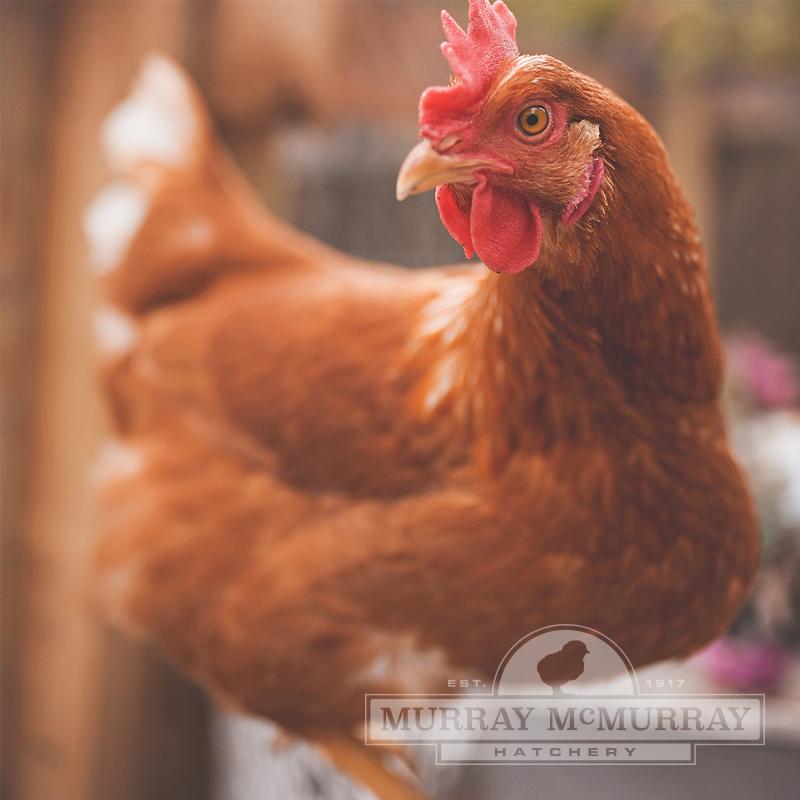
The Red Star is an example of a sex link chicken breed.
On the other hand, sex links with the same name offered by one hatchery may or may not be genetically the same as those offered by another hatchery. McMurray Hatchery’s other two sex links — Black Star and Amber Star — are not necessarily the same as sex links designated “Star” offered by any other hatchery.
One example of a sex link it the black sex link, or Black Stars. These are hybrid chickens that usually involve both Rhode Island Red and barred Plymouth Rock ancestry. The pullets are black with maybe a bit of white on the neck. The cockerels are black with a white dot on the head. At maturity, pullets are solid black with some red feathers. Roosters exhibit barring and may or may not have any red feathers. So, there’s never any doubt as to which are the hens and which are the roosters.
A unique thing to note is that McMurray Hatchery has two distinct flocks of Black Stars. At maturity, the hens of one line will grow out predominantly black with a bit of red on the chest. The other line’s hens will be barred with a grey chest.
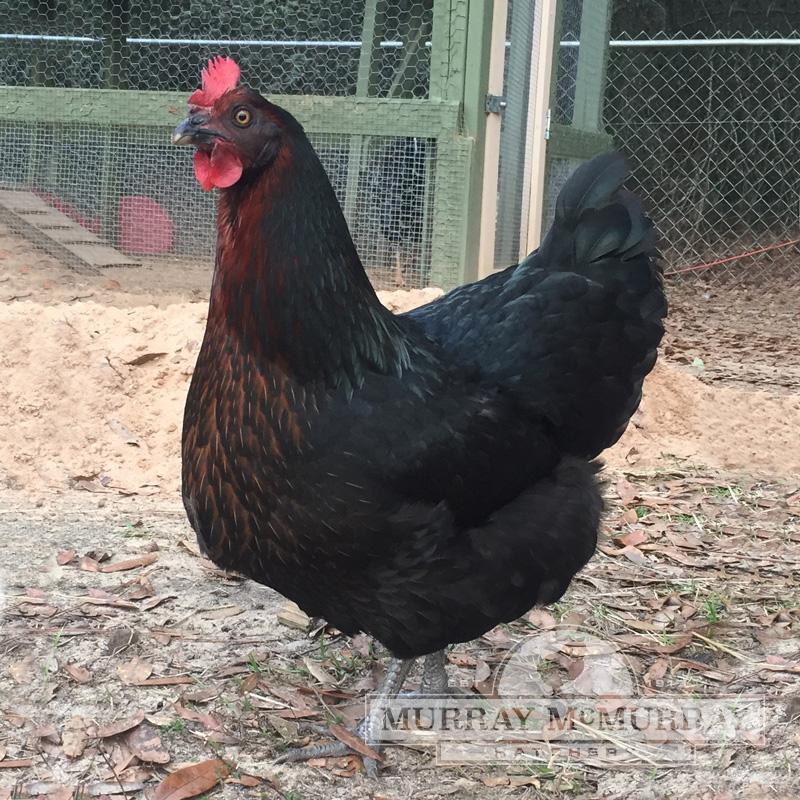
One variety of Black Star sex link chicken from Murray McMurray Hatchery.
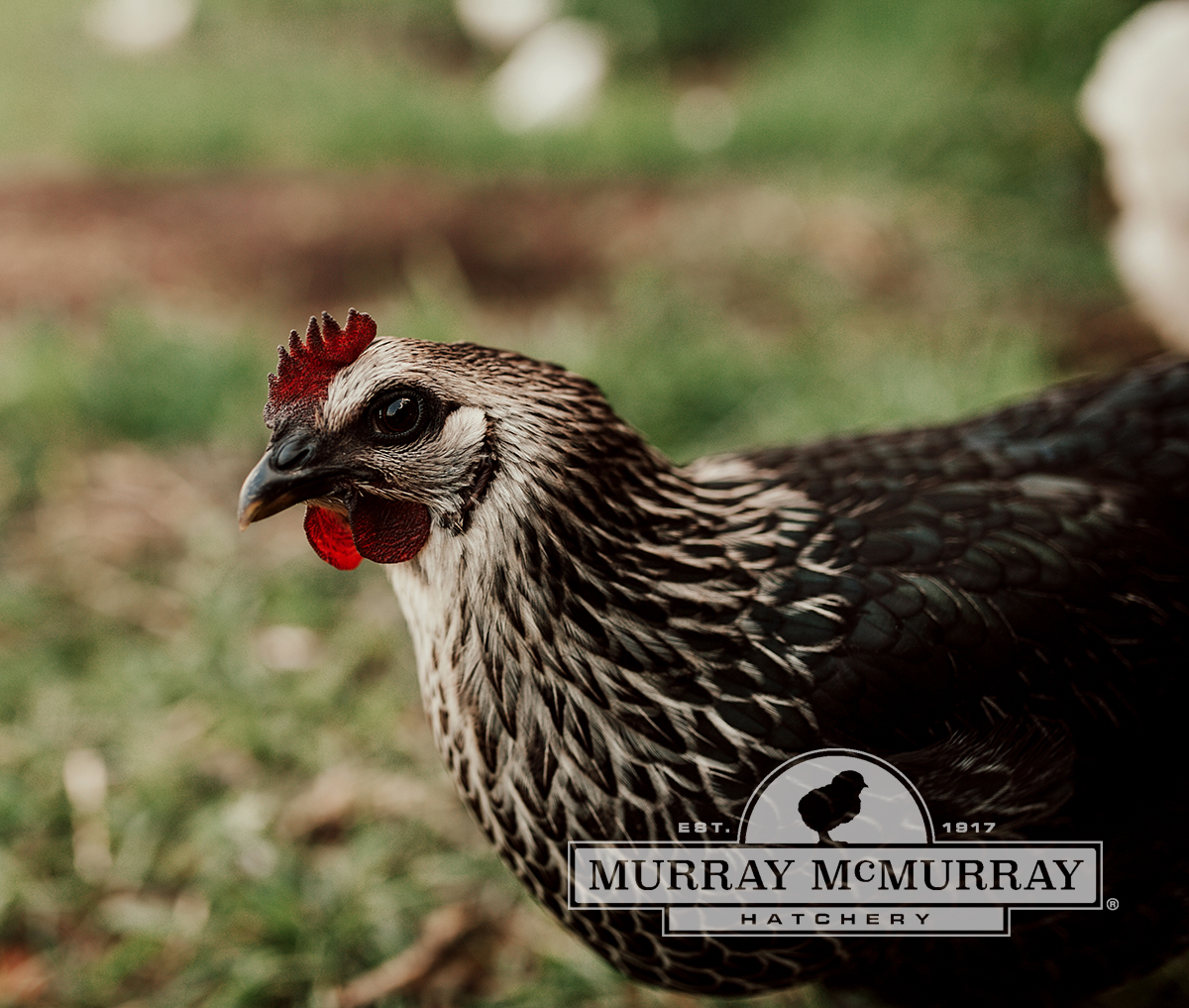
Another variety of Black Stars from McMurray Hatchery.
Although they’re all based on the same genetic phenomena, the exact genetics used to create them is not identical. That’s in part because sex links are not always the result of simply mating two specific breeds. Developing the desired genetic combination can take several generations of selective breeding.
The same is true of autosex breeds that differ in plumage color at maturity. Autosex chickens similarly take advantage of traits on the sex chromosomes, but then they are bred further to create straightbred, or purebred, chickens. The intent of these terms is to differentiate between sex link hybrids and autosexing purebred chickens.

Gail Damerow has been keeping chickens for nearly 50 years and has written several books about them including Storey’s Guide to Raising Chickens, The Chicken Health Handbook, The Chicken Encyclopedia, Hatching and Brooding Your Own Chicks, and What’s Killing My Chickens. For more about Ms. Damerow, visit her blog at GailDamerow.com.
Gail Damerow’s headshot courtesy of Kathy Shea Mormino.
Images courtesy of Nina Mullins, Anna Christian, Cassandra Haring, and McMurray Hatchery Staff.
